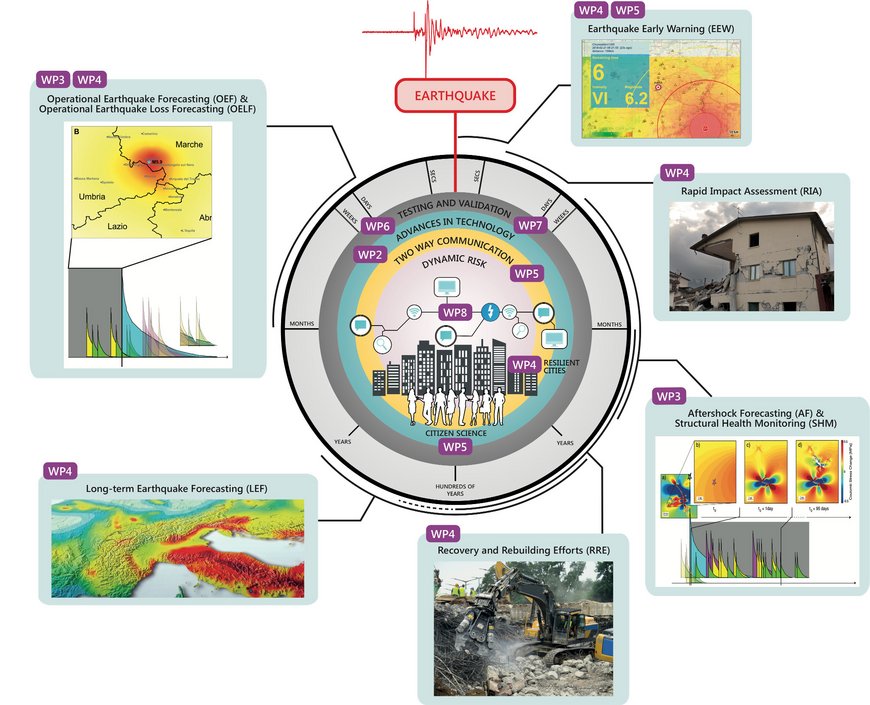RISE: Real-time earthquake risk reduction for a ReSilient Europe
The key objective of RISE is to advance real-time earthquake risk reduction capabilities for a resilient Europe. With an improved scientific understanding and the use of emerging technologies human and economic losses shall be further reduced. New measures are needed to compliment present efforts in implementing building codes and retrofitting existing structures.
RISE adopts an integrative, holistic view of risk reduction targeting the different stages of risk management. RISE assesses risk dynamically, taking into account varying time scales, locations, and contexts. Improved technological capabilities are applied to combine and link all relevant information to enhance scientific understanding and inform societies.
Examples of the challenges RISE addresses are
- Advance real-time seismic risk reduction capacities in of European societies by transitioning to a new concept of dynamic risk.
- Improve short-term forecasting and operational earthquake forecasting by developing and validating the next generation of forecasting models.
- Enhance the quality of earthquake prediction and earthquake forecasting by launching a European collaborative effort for validation and rigorous testing.
- Contribute to the establishment of sound and rational risk reduction procedures
- Improve the preparedness of societies, emergency managers, and long-term recovery management.
RISE is multi-disciplinary, involving earth-scientists, engineering- scientists, computer scientists, and social scientists.
GEOFON (and its other 3 partners from ORFEUS) will investigate the challenges posed to major seismological data centers - like the ORFEUS Data Center (ODC) and other primary EIDA nodes (GFZ, INGV, ETHZ) – by the emerging methodologies and technologies in real-time observational seismology. Examples include: (i) very large density arrays of ‘traditional’ seismic instrumentation (link with Task 2.4); (ii) low cost MEMS acceleration sensor, largely used for dense structural monitoring and the emerging EEW applications through their integration in standard smartphones; (iii) optical fibres and distributed acoustic sensing, technologies with the potential to mimic a seismic observatory managing billions of sensors. Among the issues to be addressed are: (a) real-time data acquisition and processing; (b) permanent data archival; (c) rapid users’ accessibility to the data; and (d) scalability. We will first compile a white paper on the state-of-the-art and evaluation of emerging solutions to face the above challenges, including cloud solutions and the adoption of alternative data formats (like, e.g. ASDF) and dedicated systems (e.g., Apache Spark). Emphasis will be on the real-time availability of the data for their use in the domains of EEW, OEF and RIA. Our contribution will build on top and considerably enrich previous experience gained by the participating Institutions within national and European projects like EOSC-hub and SERA. Testing and prototypal implementation of the preferred solutions identified in the white paper will be carried out by a subset of the participating Institutions. We anticipate significant impacts of the delivered report also for the computational seismology community, which faces very similar challenges as to the archival and distribution of synthetic datasets.
Time frame
- 2017 - 2023
Funding
- Horizon 2020
Project-Investigator
- Stefan Wiemer (ETH Zürich)
- Danijel Schorlemmer (GFZ)
Personnel
- Danijel Schorlemmer (2.6)
- Javier Quinteros (2.4)
Partner
Website



